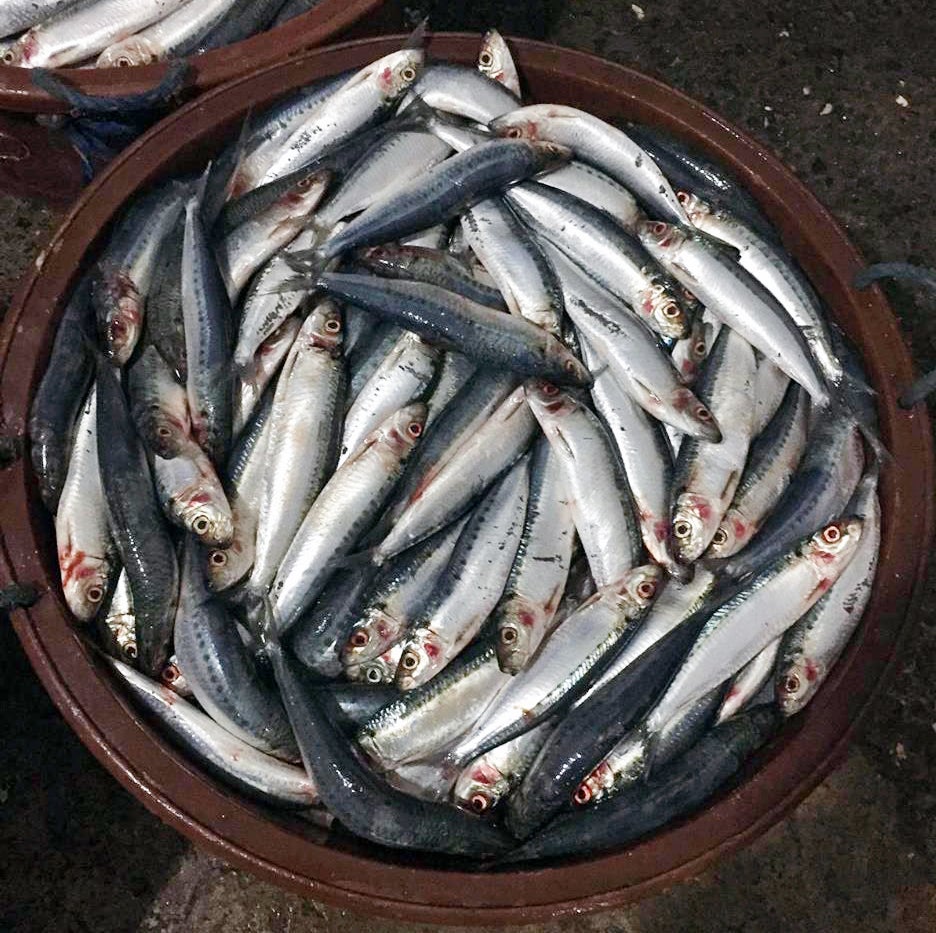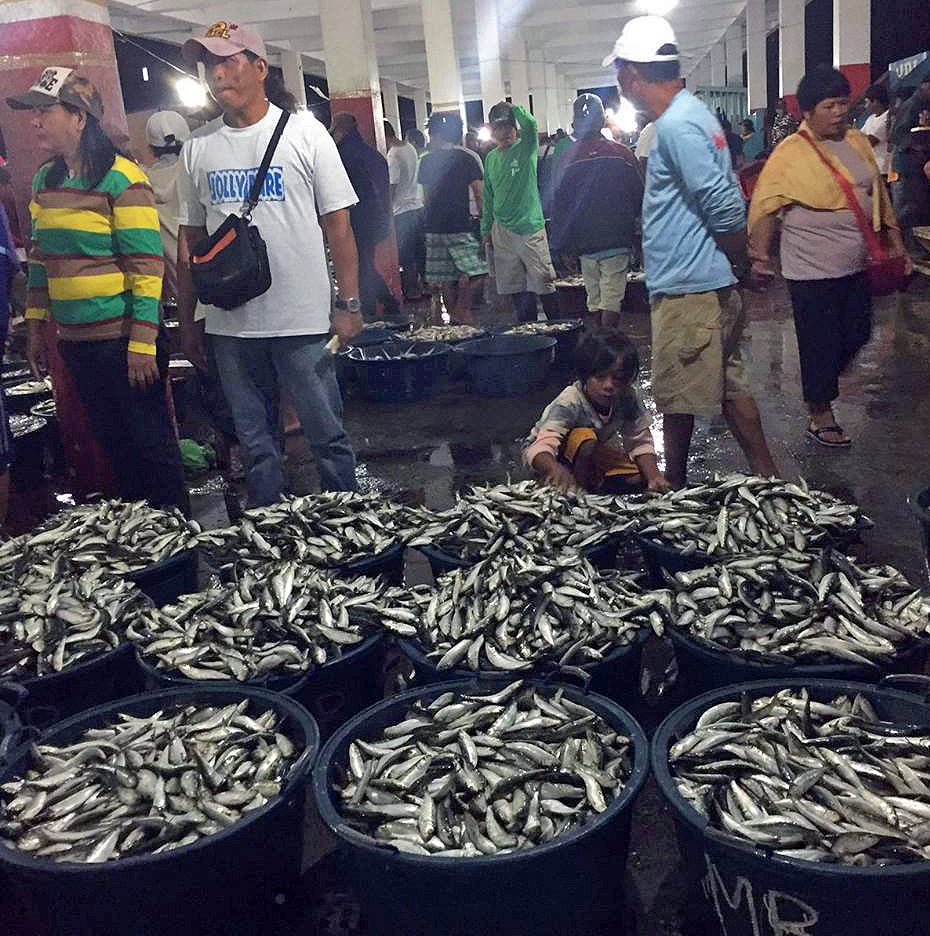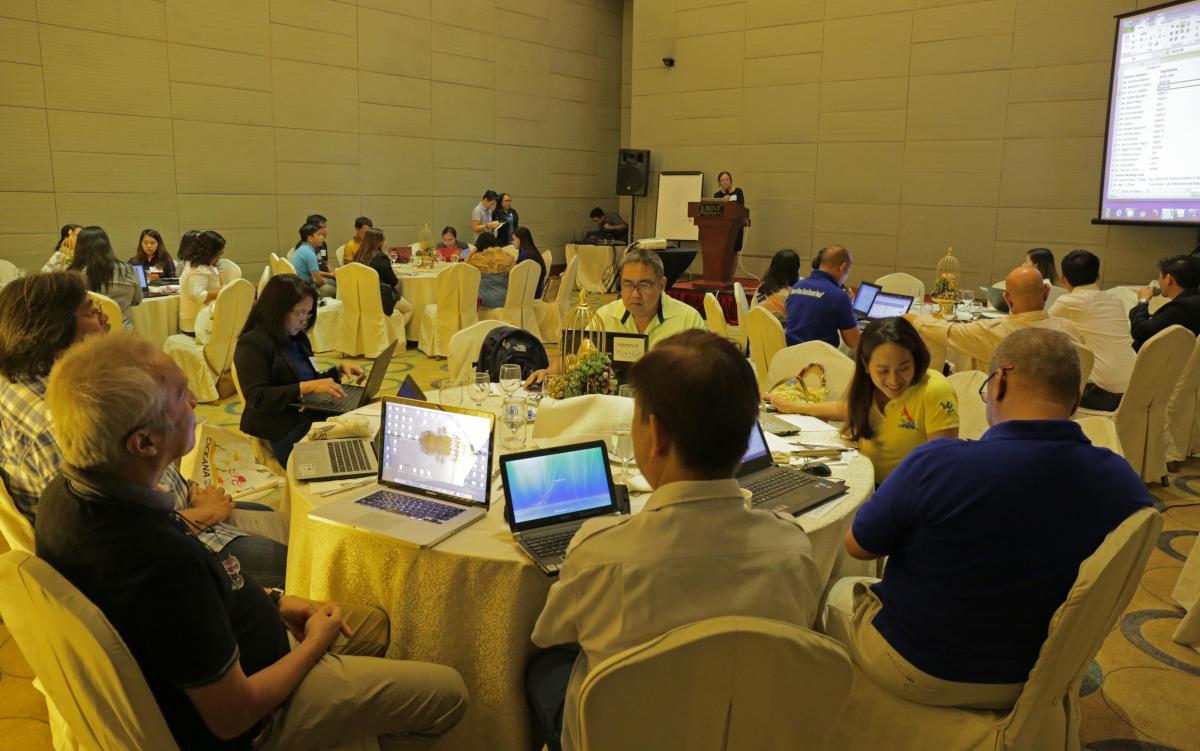National Sardine Management Framework Plan Underway – Oceana
Press Release Date: March 28, 2017
Sardines. Billions of them are caught, canned and consumed yearly. Here’s what you need to know to save these silver slivers of tastiness.
Vast shoals of bullet-shaped sardines shoot through the world’s seas, frequenting its sunlit upper layers to gorge on wafting clouds of plankton. In turn, they are eaten by larger marine predators like sharks, dolphins and tuna. Sardines form the building blocks of the oceanic food chain.
The Philippines is blessed with superb marine biodiversity, with five major sardine species fueling a thriving industry. Canned, dried and sold fresh and dripping in seaside markets, they are among the most affordable protein sources for Filipinos. A can of sardinas sells for around PHP17 – well within the range of most Pinoy wallets.
“Given the significance of this humble fish to our people, we must ensure science-based fisheries management or risk losing this valuable resource,” says Oceana Philippines Vice-President Atty. Gloria Estenzo-Ramos.
In 2015, the country netted 344,730,201 kilograms of sardines – proving that the industry is one of the country’s major economic drivers, providing both food and jobs. Thousands of Filipinos are employed as fishers, traders or factory workers in canning and bottling sectors. Zamboanga alone engages at least 30,000 workers.
Closed Seasons, Better Regulation Needed
For the past five years, closed seasons banning fishing have been successfully implemented in the Visayan Sea, Tañon Strait and Zamboanga, which produces 80% of the country’s output. These closed seasons have helped stocks regenerate based on natural seasonal spawning cycles. Fishers face fines for harvesting sardines during the closed season.
“According to our studies, regulatory schemes – particularly for closed seasons – need to be enhanced by additional management tools under the amended Fisheries Code,” explains Oceana Philippines Senior Marine Scientist Jimely Flores. “Studying how climate change affects sardines, reviewing quotas and minimum fish sizes, plus banning certain fishing gear will allow stocks to recover. We laud the Bureau of Fisheries and Aquatic Resources for committing to fast-track the adoption of a Sardine Fisheries Management Framework Plan.”
The plan will hopefully be emplaced in 2018 to serve as a roadmap for the country’s sardine fisheries while acting as a platform to share biological, economic and social knowledge.
“It is crucial to base our policies on sound science, which should prod even the most conservative players to adopt better practices for the benefit of all,” concludes BFAR Technical Services Assistant Director and National Fisheries Research Development Institute Director Drusila Esther Bayate.
Together with strong allies in the public and private sectors, Oceana hopes that by adopting a science-based strategy, schools of small, unassuming sardines shall continue feeding Filipinos for years to come.

Sardines are among the most affordable sources of food for Filipinos. (Oceana)

Philippine sardine fisheries contributed around Php 7.43 billion to the country’s economy in 2015. It is a major economic driver. (Oceana)
The Bureau of Fisheries and Aquatic Resources (BFAR) convened a technical working group to craft a unified framework for the sustainable management of sardine fisheries. (Oceana)
Location: Manila, Philippines
Contact: Gregg Yan (GYan@oceana.org)
Sardines. Billions of them are caught, canned and consumed yearly. Here’s what you need to know to save these silver slivers of tastiness.
Vast shoals of bullet-shaped sardines shoot through the world’s seas, frequenting its sunlit upper layers to gorge on wafting clouds of plankton. In turn, they are eaten by larger marine predators like sharks, dolphins and tuna. Sardines form the building blocks of the oceanic food chain.
The Philippines is blessed with superb marine biodiversity, with five major sardine species fueling a thriving industry. Canned, dried and sold fresh and dripping in seaside markets, they are among the most affordable protein sources for Filipinos. A can of sardinas sells for around PHP17 – well within the range of most Pinoy wallets.
“Given the significance of this humble fish to our people, we must ensure science-based fisheries management or risk losing this valuable resource,” says Oceana Philippines Vice-President Atty. Gloria Estenzo-Ramos.
In 2015, the country netted 344,730,201 kilograms of sardines – proving that the industry is one of the country’s major economic drivers, providing both food and jobs. Thousands of Filipinos are employed as fishers, traders or factory workers in canning and bottling sectors. Zamboanga alone engages at least 30,000 workers.
Closed Seasons, Better Regulation Needed
For the past five years, closed seasons banning fishing have been successfully implemented in the Visayan Sea, Tañon Strait and Zamboanga, which produces 80% of the country’s output. These closed seasons have helped stocks regenerate based on natural seasonal spawning cycles. Fishers face fines for harvesting sardines during the closed season.
“According to our studies, regulatory schemes – particularly for closed seasons – need to be enhanced by additional management tools under the amended Fisheries Code,” explains Oceana Philippines Senior Marine Scientist Jimely Flores. “Studying how climate change affects sardines, reviewing quotas and minimum fish sizes, plus banning certain fishing gear will allow stocks to recover. We laud the Bureau of Fisheries and Aquatic Resources for committing to fast-track the adoption of a Sardine Fisheries Management Framework Plan.”
The plan will hopefully be emplaced in 2018 to serve as a roadmap for the country’s sardine fisheries while acting as a platform to share biological, economic and social knowledge.
“It is crucial to base our policies on sound science, which should prod even the most conservative players to adopt better practices for the benefit of all,” concludes BFAR Technical Services Assistant Director and National Fisheries Research Development Institute Director Drusila Esther Bayate.
Together with strong allies in the public and private sectors, Oceana hopes that by adopting a science-based strategy, schools of small, unassuming sardines shall continue feeding Filipinos for years to come.

Sardines are among the most affordable sources of food for Filipinos. (Oceana)

Philippine sardine fisheries contributed around Php 7.43 billion to the country’s economy in 2015. It is a major economic driver. (Oceana)
The Bureau of Fisheries and Aquatic Resources (BFAR) convened a technical working group to craft a unified framework for the sustainable management of sardine fisheries. (Oceana)
Location: Manila, Philippines
Contact: Gregg Yan (GYan@oceana.org)
